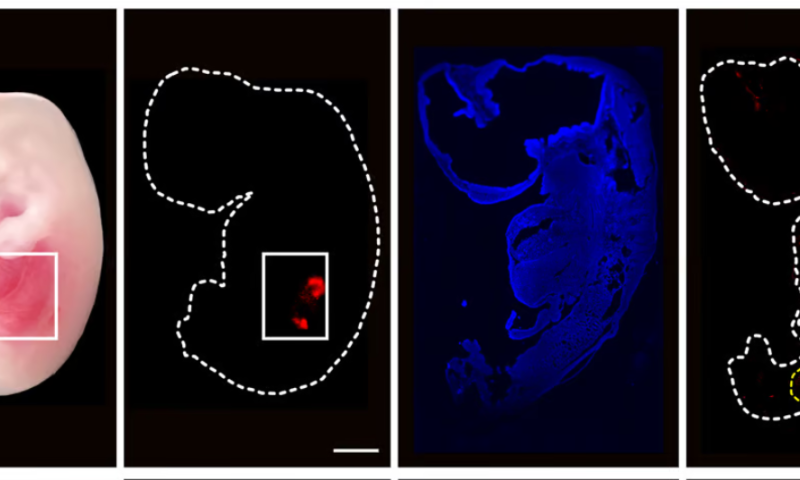Researchers for the first time have grown a part-human, part-pig kidney in a pig embryo, marking new progress toward technology that could someday address the ongoing shortage of organs for transplant patients.
In a paper published Sept. 7 in Cell Stem Cell, scientists from the Guangzhou Institute of Biomedicine and Health, Chinese Academy of Sciences described how they grew kidneys composed primarily of human cells in pig embryos. The resulting kidneys are about 50% to 60% human.
To grow the kidneys, the researchers started by using CRISPR to genetically modify early-stage pig embryos—1,820 of them—so they didn’t develop kidneys of their own. They then engineered human pluripotent stem cells, or PSCs, to make them more likely to endure the transplantation process into the embryos as well as to survive once they got there. Next, they cultured the PSCs in a special solution to turn them back to an earlier developmental time point than standard PSCs. The cells were then injected into the embryos.
There was a final, crucial step before the researchers could transplant the embryos into sows: To ensure that the pigs’ cells wouldn’t outcompete the human ones—a problem that has derailed previous efforts to grow human organs in pigs—the researchers grew the embryos for a week in a special solution that contained nutrients tailored to each cell type’s needs.
Finally, the scientists transplanted the embryos into 13 surrogate mothers. Twenty-eight days later—long enough for the kidneys to reach the second stage of development but not long enough for other organs, like the brain, to mature—they removed them.
Out of the hundreds of transplanted embryos, only five were of high enough quality to analyze. But in these, the researchers found that the kidneys were developing normally, forming tubules and the beginnings of cells that would eventually grow into the tissue that connects the kidneys to the bladder. While the cells that formed the vasculature were pig cells, the ones that made up other parts of the organ were human.
“Although the gestation was terminated rather early … the results indicate that it might be possible to generate a functional human kidney inside newborn pigs, offering an attractive alternative to overcome the shortage of human organs for transplantation,” the scientists wrote in the paper.
Such a future is a long way off, the researchers acknowledged. For one, there are ethical hurdles to overcome—some that went from theoretical to concrete in the new study when the researchers saw that a few of the human PSCs wound up in the pig embryos’ brains. While this wasn’t a concern this time, as the embryos didn’t grow to term, it could present serious issues in the future, the researchers wrote. Yet eliminating this possibility by turning off the genes that would otherwise promote the differentiation of human PSCs into brain cells or germ cells comes with a risk of inhibiting kidney development, too, they noted.
Ethical concerns aside, there are other problems to contend with. The way the human PSCs were engineered could potentially be detrimental to both the kidney cells and the embryos, Alena Pance, Ph.D., a cell and molecular biologist at the University of Hertfordshire, pointed out in a statement to the U.K.’s Science Media Centre. To help the PSCs grow into kidneys in the embryos, the scientists overexpressed two genes—one a known cancer-linked gene that sustains the cells’ ability to proliferate, the other a gene that keeps them from dying.
“While expression of these genes helps the human cells to survive in the pig embryo … their long term expression and effects on the cells are not described,” Pance wrote. “This is important because the expression system used can be leaky and represent a hindrance to any clinical use of the biological material.” In fact, she added, this could be one of the reasons so many of the study’s embryos failed to develop normally.
Growing the kidneys for longer is one of the next items on the research team’s to-do list, according to a press release put out by Cell. Beyond that, stem cell scientists who hope to realize the goal of generating human organs in pigs will need to figure out how to humanize the rest of the cells that make up the kidney, like vascular cells.
“Because organs are not composed of just one cell lineage, in order to have an organ where everything comes from the human, we would probably need to engineer the pigs in a much more complex way and that also brings some additional challenges,” senior author Miguel Esteban, Ph.D., said in the release.

